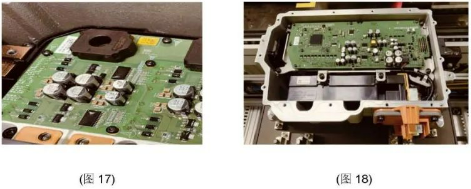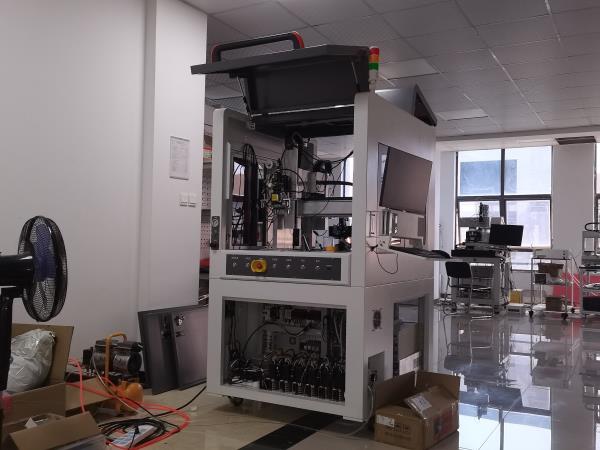Application of Laser Constant Temperature Soldering in IGBT Power Modules for Electric Vehicles
As is widely known, the IGBT chip, also called an Insulated Gate Bipolar Transistor, is a power semiconductor widely used in various applications. From household appliances to vehicles such as cars, airplanes, and high-speed trains, IGBT chips are present everywhere, earning them the title of the "CPU" of the power electronics industry.
The most critical role of IGBT chips, however, lies in the field of new energy. They are an indispensable component of new energy vehicles. This tiny chip alone accounts for 5% of a vehicle's total cost and, together with power battery cells, is referred to as the "dual core" of the vehicle.
This case study involves the soldering process of IGBT power modules in the main electronic control unit of an electric vehicle project. The manufacturing and assembly process involves first installing the IGBT power modules and connectors into a cast aluminum housing and securing them. After the preceding SMT (Surface Mount Technology) process is completed, the circuit board is assembled into the cast aluminum housing, with the pins of the IGBT power modules and connectors protruding through the pin holes on the circuit board (Figures 17 and 18). The entire workpiece is then positioned on a conveyor production line for soldering, followed by inspection and conformal coating. Finally, other peripheral components are installed to complete the assembly. Since the electric control loop in electric vehicles operates at high voltage, the reliability of soldering becomes even more critical.

Most components on the power-drive IGBT module substrate are assembled using SMT (Surface Mount Technology). However, the power-drive module components are through-hole parts and cannot undergo reflow soldering again. Additionally, the IGBT has numerous leads and relatively poor heat resistance. Furthermore, due to structural constraints, the PCB must be placed with the soldering side facing upward, requiring rapid heating to complete soldering quickly—otherwise, the components may be damaged.
The process specification mandates that each solder joint must be completed within a Cycle Time of 3 seconds. After a comprehensive evaluation, the customer selected a dual-X, dual-Y, dual-station soldering machine with solder paste dispensing and wire feeding capabilities. The system is controlled by a Googol eight-axis motion control card, where Y1 and Y2 serve as two workstations for placing and processing products.
X1 axis: Equipped with a welding head and an optional wire feeding mechanism.
X2 axis: Equipped with a solder paste dispensing head, a positioning camera, and an optional height-measuring sensor.
This setup ensures high-speed, precise soldering while meeting the strict thermal and cycle time requirements of IGBT power modules.

Advantages of Songsheng Optoelectronics' Dual-X Dual-Y Dual-Station Solder Paste Dispensing and Wire Feeding Welding Machine:
Non-Contact Soldering: Only the localized soldering area is heated during the process, eliminating thermal impact on surrounding regions.
High Precision: The laser spot can achieve micron-level accuracy, with processing time precisely controlled via programming.
Minimal Workspace Requirements: The fine laser beam replaces traditional soldering iron tips, enabling precision soldering even in areas with physical obstructions.
Vision-Based Solder Paste Dispensing & CCD-Coaxial Monitoring: Equipped with visual positioning for solder dispensing and a coaxial CCD for real-time welding monitoring. The soldering operation is simplified, and the laser head is easy to maintain.
High Photoelectric Conversion Efficiency: Laser soldering outperforms conventional iron heating, offering faster single-point soldering, rapid tin melting, no solder splashing, and minimal residue.
Closed-Loop Temperature Control & Real-Time Monitoring: The system features constant-temperature laser processing with real-time temperature feedback. The adjustable laser spot accommodates varying solder joint sizes for optimal soldering results.
Contact: Mr.Xiao
Phone: +86-13385280662
E-mail: market001@whlaser.cn
Add: Room 02, Floor 5, Building 9, Gezhouba Sun City, No. 40, Gaoxin 4th Road, Donghu New Technology Development Zone, Wuhan